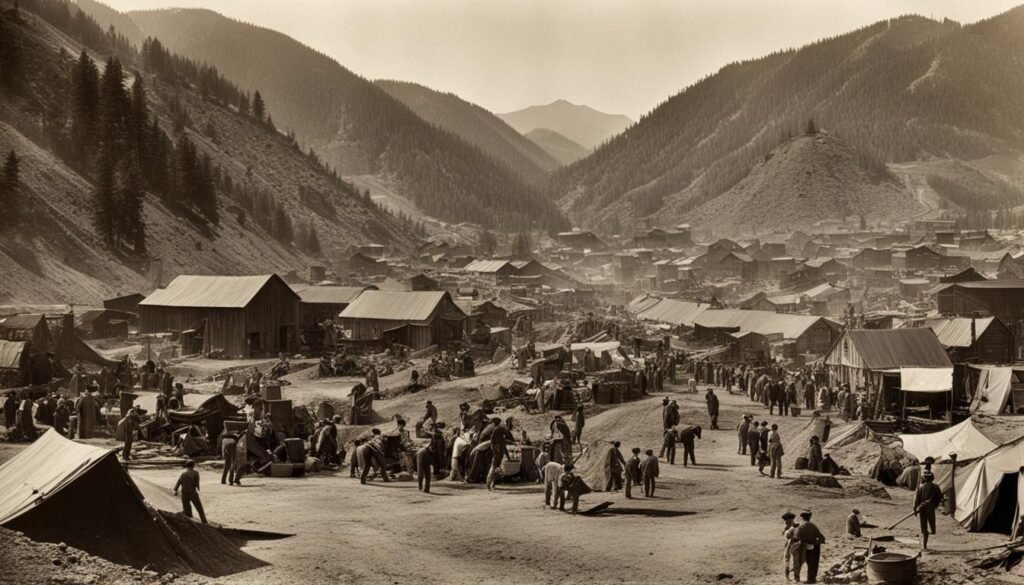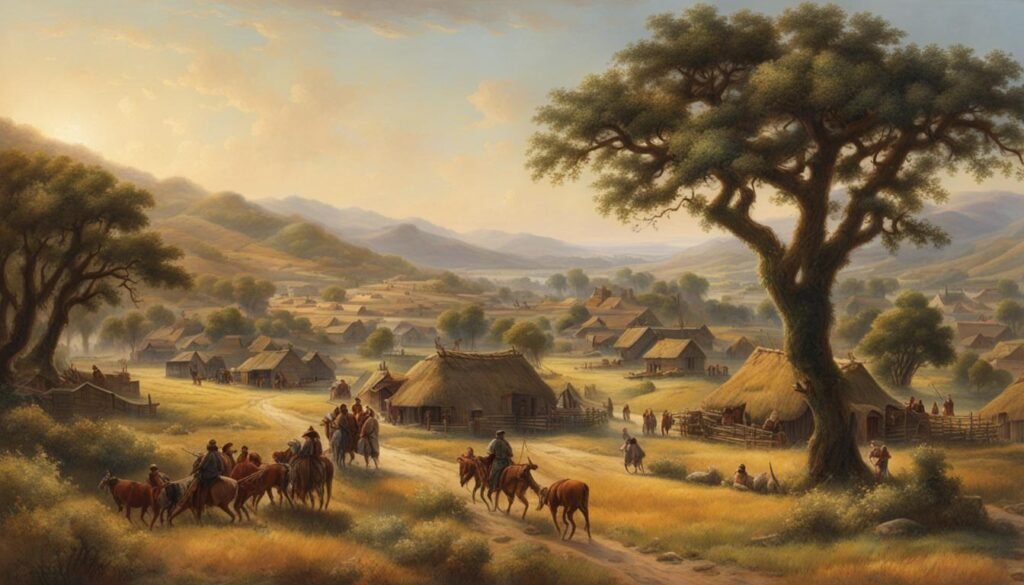As a nature enthusiast, I am always on the lookout for new and exciting places to explore the beauty and diversity of the natural world. One destination that has caught my attention is California, a state known for its stunning landscapes and abundant wildlife.
California is home to a collection of national wildlife refuges that are dedicated to the conservation and protection of fish, wildlife, plants, and their habitats. These refuges offer fantastic opportunities for both nature lovers and wildlife photographers to experience the wonders of the natural world up close.
One notable complex of wildlife refuges in California is the Audubon National Wildlife Refuge Complex. Managing around three dozen refuges, this complex plays a crucial role in preserving the rich biodiversity of the state.
Key Takeaways:
- California is home to numerous national wildlife refuges.
- The Audubon National Wildlife Refuge Complex manages several refuges in California.
- These refuges are dedicated to conserving and protecting fish, wildlife, plants, and their habitats.
- Visiting national wildlife refuges in California offers opportunities for nature enthusiasts and wildlife photographers to indulge in the beauty of the natural world.
- Exploring these refuges contributes to the conservation and preservation efforts of California’s precious wildlife and habitats.
Don Edwards San Francisco Bay National Wildlife Refuge
Located just minutes away from the headquarters of tech giants like Google and Facebook, the Don Edwards San Francisco Bay National Wildlife Refuge is a haven of natural beauty in the heart of the bustling Silicon Valley.
This refuge offers 30 miles of scenic walking trails, making it a paradise for hikers and nature enthusiasts. Whether you’re a seasoned hiker or a beginner looking for a leisurely stroll, there are trails for every skill level. As you explore the trails, you’ll be surrounded by the breathtaking landscapes and diverse wildlife that call this refuge home.

One of the highlights of visiting the Don Edwards San Francisco Bay National Wildlife Refuge is the abundance of wildlife-related recreation opportunities. Bird-watchers will be delighted by the wide variety of migratory and resident bird species that can be spotted throughout the year. Bring your binoculars and keep an eye out for graceful shorebirds, majestic raptors, and colorful songbirds.
If photography is your passion, this refuge offers endless opportunities to capture stunning images of nature. From picturesque sunsets over the bay to close-up shots of unique flora and fauna, every turn in the trail presents a new photographic adventure.
Whether you’re looking for a peaceful escape from the city or an exciting outdoor adventure, the Don Edwards San Francisco Bay National Wildlife Refuge has something for everyone. Lace up your hiking boots, grab your camera, and embark on a journey to discover the beauty and serenity of this extraordinary refuge.
Lower Klamath National Wildlife Refuge
When it comes to experiencing the wonders of nature, Lower Klamath National Wildlife Refuge should be at the top of your list. Established in 1908, it holds the distinction of being the first waterfowl refuge in the United States. Located in California, this refuge offers breathtaking views of the majestic 14,000-foot Mount Shasta, creating a picturesque backdrop for an unforgettable adventure.
During the winter months, Lower Klamath National Wildlife Refuge becomes a haven for bird enthusiasts, particularly those eager to catch a glimpse of the iconic bald eagle. Imagine witnessing the awe-inspiring sight of eight bald eagles perched majestically in a single tree. This unique spectacle attracts visitors from far and wide, making it a must-visit destination for bird lovers.

As you explore the refuge, you’ll have the opportunity to immerse yourself in nature, observing a rich variety of wildlife in their natural habitats. From the vibrant flora to the diverse bird species, every moment spent here is a chance to connect with the beauty of the natural world.
Whether you’re an avid bird-watcher, a photography enthusiast, or simply someone who appreciates the tranquility that nature provides, Lower Klamath National Wildlife Refuge offers an experience that will leave you inspired and rejuvenated. So pack your binoculars, bring your camera, and get ready to create memories that will last a lifetime.
San Diego Bay National Wildlife Refuge and Tijuana Slough National Wildlife Refuge
Located along the picturesque Pacific coastline just north of the US-Mexico border, the San Diego Bay National Wildlife Refuge and Tijuana Slough National Wildlife Refuge are two captivating natural sanctuaries that offer a haven for migratory birds and a glimpse into the beauty of coastal wetlands.
These refuges are a sanctuary for hundreds of species of birds, including elegant egrets, majestic herons, and vibrant shorebirds. Nesting and feeding in the coastal wetlands, these migratory birds rely on the abundant resources and protected habitats provided by these refuges.
Visitors to the San Diego Bay and Tijuana Slough National Wildlife Refuges can immerse themselves in the tranquility of nature while enjoying the opportunity to observe migratory birds in their natural habitats. The refuges offer a network of flat trails, providing easy access for exploration. Nature enthusiasts can also indulge in the breathtaking experience of photographing wildlife against the stunning backdrop of the Pacific Ocean.
By visiting the San Diego Bay National Wildlife Refuge and Tijuana Slough National Wildlife Refuge, you not only have the chance to witness the awe-inspiring beauty of migratory birds and coastal wetlands but also contribute to the conservation and preservation of these vital ecosystems.
Sacramento National Wildlife Refuge and Sacramento National Wildlife Refuge Complex
Sacramento National Wildlife Refuge, located approximately 75 miles north of California’s capital city, is a must-visit destination for wildlife enthusiasts. As part of the larger Sacramento National Wildlife Refuge Complex, this refuge offers a unique opportunity to explore the diverse wildlife and habitats of California.
One of the key features that sets Sacramento National Wildlife Refuge apart is its prime location along the Pacific Flyway. As the major migration route for birds along the western coast of North America, the Pacific Flyway attracts tens of thousands of ducks and geese during the peak waterfowl season. Visitors to the refuge can witness breathtaking displays of bird migrations and enjoy unparalleled wildlife viewing experiences.
For those looking to immerse themselves in the beauty of nature, the refuge offers various wildlife viewing opportunities. Whether you prefer to observe the stunning waterfowl from the comfort of the auto tour or explore the network of nature trails on foot, you’ll have plenty of options to get up close and personal with the local flora and fauna.
To enhance your visit, don’t forget to bring your camera! Sacramento National Wildlife Refuge provides fantastic opportunities for nature photography. Capture the elegance of the waterfowl in flight, the serene reflections on the wetlands, or the vibrant colors of the surrounding vegetation.
The Sacramento National Wildlife Refuge Complex encompasses a vast area and consists of other refuges that offer unique experiences. Exploring the interconnected network of refuges within the complex allows you to dive deeper into the wonders of nature and discover even more remarkable wildlife sightings.
So, whether you’re an avid birdwatcher, a wildlife enthusiast, or simply someone who appreciates the beauty of nature, a visit to Sacramento National Wildlife Refuge and the Sacramento National Wildlife Refuge Complex should be on your bucket list.
Image:
Conclusion
California’s national wildlife refuges are a treasure trove of diverse habitats and incredible wildlife, making them the perfect havens for nature enthusiasts. From the serene wetlands of the San Francisco Bay to the picturesque coastal refuges of San Diego, and the vital migratory bird hotspots along the Pacific Flyway, there is an abundance of wonders waiting to be explored and discovered.
By visiting these national wildlife refuges in California, not only do visitors have the opportunity to witness the beauty of nature up close, but they also play a crucial role in the conservation and preservation of the state’s invaluable wildlife and habitats. These refuges serve as bird sanctuaries, providing crucial nesting and feeding grounds for hundreds of species. Additionally, they function as nature reserves, safeguarding the intricate ecosystems and ensuring the survival of numerous plants and animals.
Whether it’s observing the awe-inspiring sight of bald eagles perched atop trees at Lower Klamath National Wildlife Refuge or immersing oneself in the vibrant coastal wetlands at San Diego Bay and Tijuana Slough National Wildlife Refuges, each experience offers a unique perspective on California’s natural heritage. Exploring these refuges is not only a rewarding adventure but also a chance to contribute to the ongoing efforts to protect and preserve the natural wonders of the Golden State.
FAQ
What are national wildlife refuges in California?
National wildlife refuges in California are protected areas dedicated to conserving and protecting fish, wildlife, plants, and their habitats for the benefit of both nature and people.
How many refuges does the Audubon National Wildlife Refuge Complex manage in California?
The Audubon National Wildlife Refuge Complex manages about three dozen refuges in California.
Where is Don Edwards San Francisco Bay National Wildlife Refuge located?
Don Edwards San Francisco Bay National Wildlife Refuge is located just minutes away from the headquarters of tech giants like Google and Facebook.
What recreational opportunities are available at Don Edwards San Francisco Bay National Wildlife Refuge?
Visitors can enjoy 30 miles of walking trails and a variety of wildlife-related recreation opportunities, including bird-watching and nature photography.
What is notable about Lower Klamath National Wildlife Refuge?
Lower Klamath National Wildlife Refuge, established in 1908, was the first waterfowl refuge in the United States. It is known for its stunning backdrop of the 14,000-foot Mount Shasta and is especially popular in winter for observing bald eagles.
Can visitors see bald eagles at Lower Klamath National Wildlife Refuge?
Yes, visitors can witness the sight of eight bald eagles perching in a single tree at Lower Klamath National Wildlife Refuge, making it a must-visit destination for bird lovers.
Where are San Diego Bay National Wildlife Refuge and Tijuana Slough National Wildlife Refuge located?
San Diego Bay National Wildlife Refuge and Tijuana Slough National Wildlife Refuge are located along the Pacific coastline just north of the US-Mexico border.
What can visitors do at San Diego Bay National Wildlife Refuge and Tijuana Slough National Wildlife Refuge?
Visitors to these refuges can enjoy viewing migratory birds, walking on flat trails, and photographing wildlife against the backdrop of the beautiful ocean.
Where is Sacramento National Wildlife Refuge located?
Sacramento National Wildlife Refuge is situated approximately 75 miles north of California’s capital city.
What is special about Sacramento National Wildlife Refuge?
Sacramento National Wildlife Refuge is part of the larger Sacramento National Wildlife Refuge Complex and is known for its prime location along the Pacific Flyway, attracting tens of thousands of ducks and geese during peak waterfowl season.
What recreational opportunities are available at Sacramento National Wildlife Refuge?
Visitors can enjoy wildlife viewing opportunities, driving the auto tour, and exploring the various nature trails available throughout the complex.
Why should I visit California’s national wildlife refuges?
California’s national wildlife refuges offer a diverse range of habitats and wildlife, making them ideal destinations for nature lovers. By visiting these wildlife refuges, visitors not only get a chance to witness the wonders of nature but also contribute to the conservation and preservation of California’s precious wildlife and habitats.







